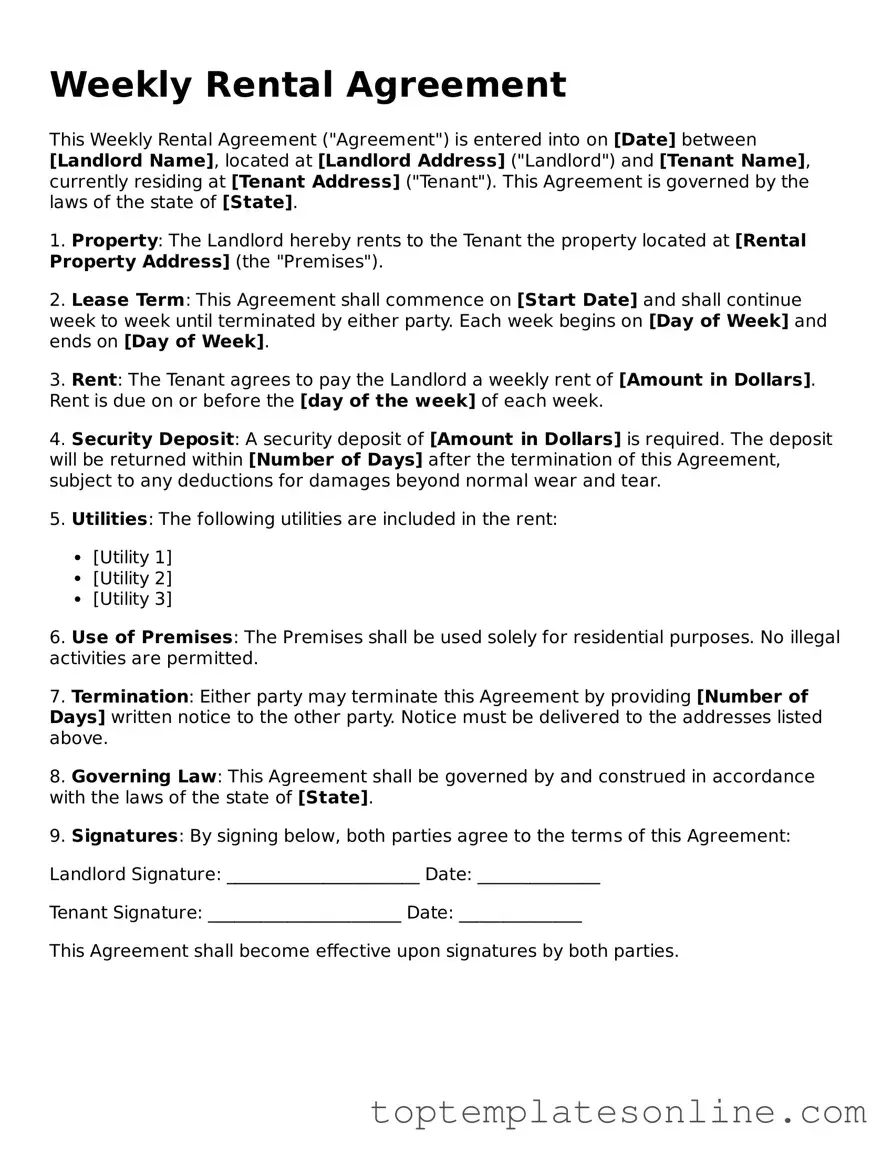Attorney-Approved Weekly Rental Agreement Form
A Weekly Rental Agreement is a legal document that outlines the terms and conditions for renting a property on a weekly basis. This form is essential for both landlords and tenants, as it clarifies expectations and responsibilities. Understanding this agreement can help ensure a smooth rental experience for everyone involved.
Customize Weekly Rental Agreement Here
